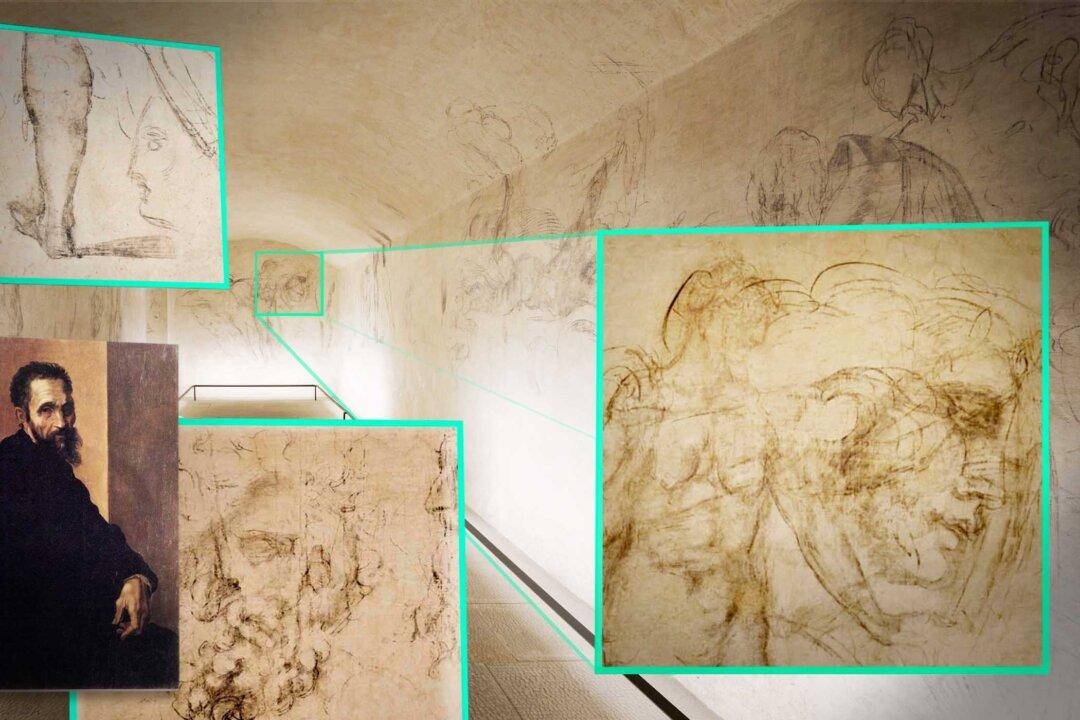You can visit the safehouse where Michelangelo holed up like a fugitive fearing for his life, in 1530, to escape the wrath of the Pope.
You can see scrawled on the walls of the cramped, narrow room the master draftsman’s very own prisoner’s graffiti—there are his self-portrait, the Laocoön, even Christ. There is what some experts think is a reproduced head from the Sistine Chapel ceiling.






